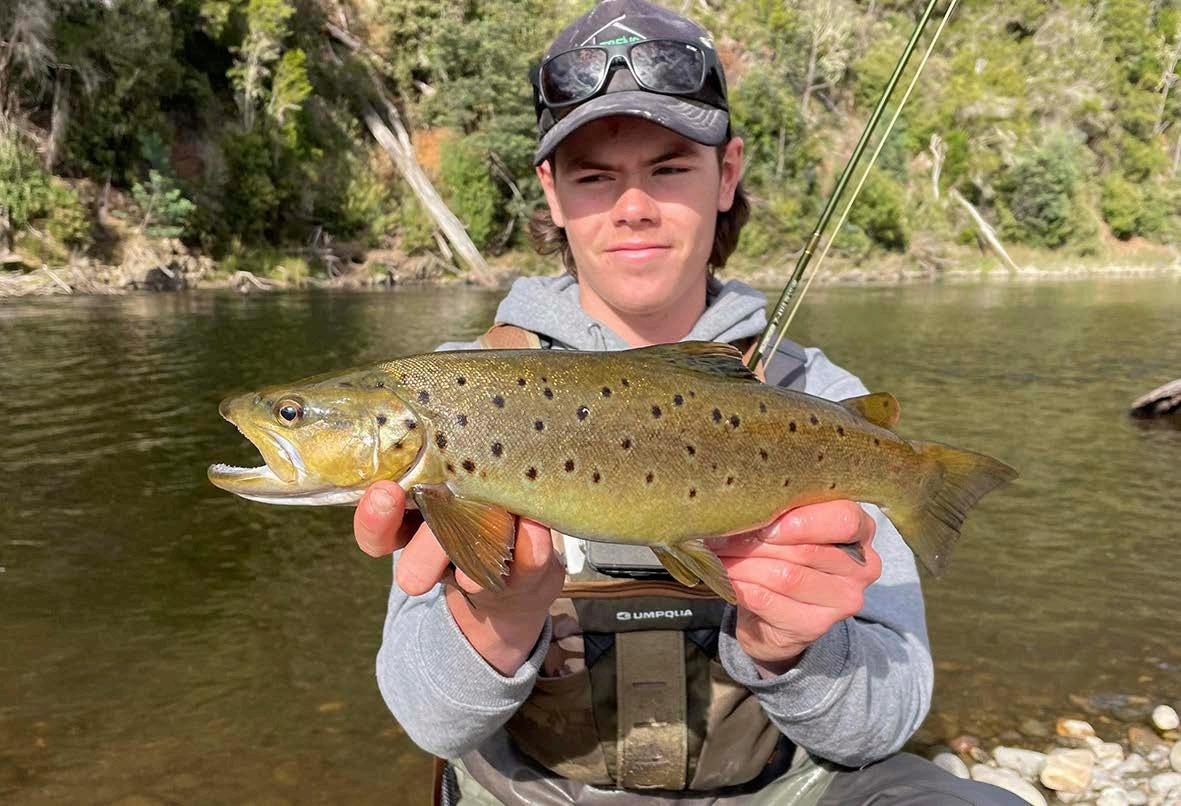
2 minute read
My competition journey
Persistence and a well thought plan brings success
Finn McDowell
The preparation for a fly fishing competition or any competition for that matter is one of the most crucial things to ensure that you perform well. Round two of the Tasmanian Fly Fishing championships was different as it was not common for a state round to consist of two formats (rivers and lake/loch style) within the one comp. I had previously fished the national fly fishing championships and there is a lot to think about preparation wise as you have to prepare for both formats and whatever the day might throw at you.
For this comp we would fish the Mersey River on Saturday and Little Pine Lagoon on Sunday, fishing two sessions each day. Due to only having a short time to fish, river sessions were two hours and lake sessions were 3 hours, you really have to make the most of your fishing time and not mess around with things that can be done before the comp. With this in mind, I made sure I had all the correct flies, lots of leaders pre-made, all my gear packed into my chest pack so I knew exactly where it was. Coming into the comp I was confident about the venues as I had done lots of fishing on them in the past, which made the preparation a little easier.
First Session - Mersey River
For my first session on the Mersey, I drew beat eight, a part of the river I had never fished. The beat was the water below Kellys Cage bridge and I was keen to get a look at this new section of the river. After the first inspection of my beat, I was happy with the type of water that I had drawn. A nice run leading into a deep, flat pool, which is always a hotspot for high concentrations of fish. Then, followed by a long straight, shallow glide above. A shallow riffle section sat above the glide, also a hotspot for those smaller, easier to catch fish. My thought process coming into this beat was to bypass the deep pool and fish the large run flowing in and move up the beat after that, picking the best water to fish.
Before too long my session was underway, after casting to a few caenid feeders rising in the soft pocket next to the run and having no success, I thought rather than wasting time on harder to catch fish I would Euro Nymph the run, knowing it would hold easier to catch fish. I went with my favourite nymphing set up for the Mersey, that being the Primal 10’ 6” 3 weight paired with the trusty cheap no-name fly reel. I like this reel due to the smoothness in the drag which I find, alongside many other anglers, a major factor when choosing a Euro nymphing reel.
I opted for a double nymph rig and tied on my confidence flies, pink bead orange tag nymph and copper beaded pheasant tail nymph with a dark coloured soft hackle, both in size 16. I also set up a standard rod for Dry Fly and Nymph under Dry, this being my a Sage Z-Axis 9’ four weight. In my eyes possibly a little bit fast action for the light tippets and small fish, but a great rod to fish with. I had that paired with another no-name fly reel and a 4 weight, weight-forward floating line.
The first cast into the inside edge of the run produced a nice little brown to kick things off. Landing your first fish of the session is always a big relief. After fishing the











